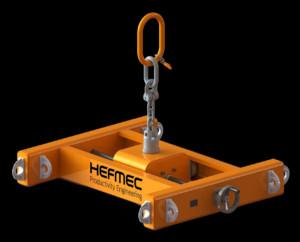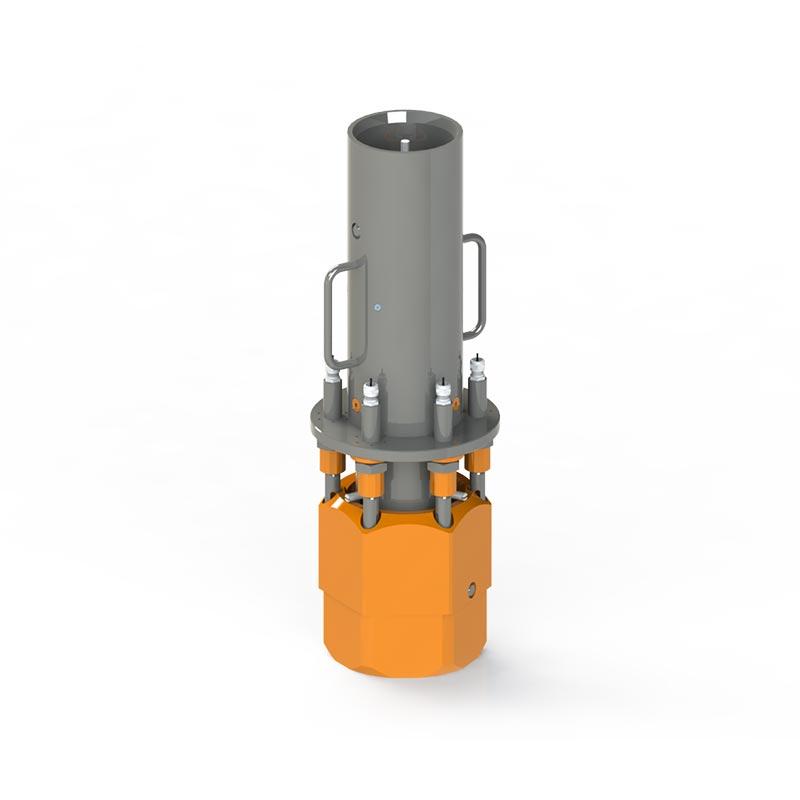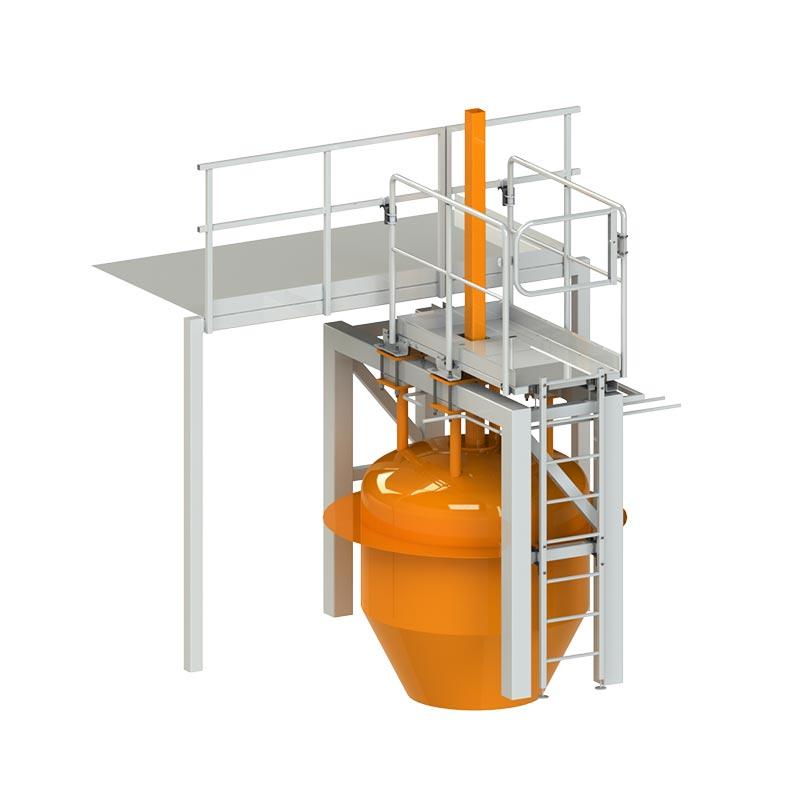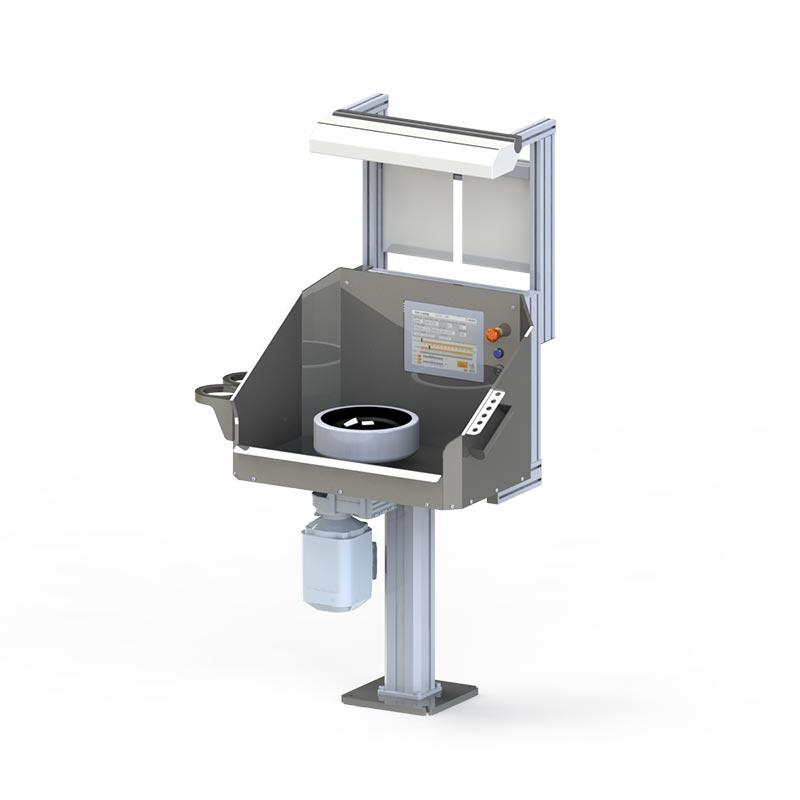The safe movement of heavy equipment can also be done efficiently without cranes by using specially designed handling equipment and the right working methods. Professional moving requires the use of suitable trolleys, skates and jacks that allow heavy equipment to be moved in a controlled manner, even in confined spaces. Careful planning, risk assessment and worker training are key. Properly implemented, the move is not only safe but also cost-effective for demanding industrial environments.
What are the most effective tools for moving heavy equipment without a crane?
Industrial heavy equipment can be moved safely and efficiently by using a range of specialised tools. Hefmec offers a wide range of transfer solutions specifically designed for demanding industrial environments.
Trolleys are one of the most efficient tools for moving heavy equipment. Hefmec axle handling trolleys are ideal for handling and moving heavy and awkwardly shaped pieces. They allow heavy shafts to be moved, lifted and turned with a single tool, significantly speeding up work processes.
Roller skates and transfer skates offer a flexible solution when heavy equipment needs to be moved in a controlled manner. In particular, they have the advantage of a low profile that allows heavy equipment to be placed underneath even in limited spaces. Transfer skates can have a load capacity of several tonnes, making them suitable for a wide range of industrial applications.
Hydraulic jacks and lifting aids complement the transfer equipment, allowing heavy equipment to be lifted and positioned to the exact height required. Hefmec’s product range also includes a variety of turntables and tipping platforms that allow containers and equipment of almost any shape to be turned quickly and safely.
Each transfer vehicle is designed for different applications, and the choice of the appropriate vehicle depends on the weight, shape and route of the equipment to be moved. Hefmec experts can help you select the right tools for each situation and size them to meet your needs.
How do you ensure safety at work when moving heavy equipment?
Moving heavy equipment always involves risks, and managing these is of paramount importance. Ensuring occupational safety starts with careful planning and risk assessment before starting the removal work.
Hefmec’s products are designed with safety first. All transfer equipment is equipped with the necessary safety features, such as locking mechanisms and safety valves. For example, locks are always designed into the trolleys to ensure product stability, minimising the risk of the equipment falling or tipping over.
Proper training of workers is essential for safety. All persons involved in the removal work must be trained in the correct use of the tools to be used and in safe working practices. This includes knowledge of how to plan a move, how to distribute loads, and how to deal with abnormal situations.
Agreed safety practices and protocols must be followed during the transfer work. These include, but are not limited to:
- Isolation and marking of the transfer area
- Use of personal protective equipment
- Clear communication between those involved in the transfer
- Regular inspection of transport equipment
- Compliance with load limits
Hefmec products can significantly improve safety at work, as they are designed to replace the most risky methods. All products undergo a certified design and manufacturing process to ensure their durability and safety under heavy-duty use.
What are the cost savings of alternative transmission methods?
When comparing the use of cranes with alternative transfer methods offered by Hefmec, the cost savings can be significant. Hiring or purchasing cranes requires a significant investment, whereas targeted transfer solutions can be precisely tailored to your needs.
Investment costs are usually significantly lower when specialised tools are chosen over cranes. For example, the cost of purchasing transfer cars and skates is only a fraction of the cost of a crane system. This is particularly important in premises where the installation of a crane would require structural modifications.
Savings in operating costs are achieved when:
- No need for a specially trained crane driver
- Lower energy consumption
- Lower maintenance and inspection costs
- No costs for periodic inspections of cranes
In the long term, overall cost-effectiveness will be a particular focus. Hefmec transmission solutions are designed to withstand heavy use over a long period of time, extending the life of the investment. In addition, the reduction of phase times thanks to efficient transfer equipment brings significant savings in production.
According to our customers’ experience, productivity improvements are one of the biggest sources of savings. When moves can be made more quickly and safely, employees can focus on value-added work. At the same time, production downtime and material damage are reduced, further improving cost-effectiveness.
What kind of spaces are best suited for Hefmec transfer solutions?
The diversity of industrial premises poses particular challenges for moving heavy equipment. Hefmec transfer solutions are designed to meet these challenges in a variety of environments.
Tight spaces are one of the most typical challenges in industry. Traditional cranes often require a lot of space both vertically and horizontally. Hefmec transfer solutions, such as low-profile transfer trolleys, work perfectly in confined spaces. These solutions allow heavy equipment to be moved, for example in machine rooms where space is limited.
Low room heights often limit the use of cranes. The alternative transfer methods offered by Hefmec do not depend on ceiling height, making them ideal for spaces where ceiling height is limited. This is particularly useful in old industrial buildings or basements.
Uneven and sloping surfaces present their own challenges. Hefmec designs its transfer solutions taking into account the load-bearing capacity of the floor and the quality of the surface. Transfer equipment can be equipped with load-balancing features to ensure safe transfer even on challenging surfaces.
We have delivered successful projects in many challenging environments. For example, at a site in the process industry, we carried out the transfer of a heavy container in a confined space using customised transfer trolleys and reversible tipping racks. The project was a great success without a crane and the customer achieved significant savings in both time and cost.
What to consider before starting to move heavy goods vehicles?
Careful planning is the key to a successful and safe heavy equipment transfer. Here is a comprehensive checklist for planning your transfer project:
- Preparation and inspection of the transfer route:
- Measure access routes and ensure adequate space
- Remove obstacles and protect sensitive surfaces
- Take into account possible thresholds and level differences
- Ensuring the bearing capacity of the substrate:
- Check the load-bearing capacity of the floor or soil along the entire route
- Determine point loads at critical points
- If necessary, reinforce the chassis with load-bearing plates
- Selection and sizing of transport equipment:
- Determine the exact weight and centre of gravity of the equipment to be moved
- Choose the appropriate transfer equipment according to weight and shape
- Pay attention to the specific characteristics and sensitive parts of the piece
Hefmec offers comprehensive engineering services to ensure the success of your relocation projects. If required, our experts will carry out an on-site inspection and draw up a detailed relocation plan. This includes the tools, methods and safety measures to ensure a smooth transfer.
It is also important to consider risk assessment at the design stage. We identify potential risk factors in advance and plan measures to manage them. This proactive approach has proven to be effective in preventing accidents.
Our customers value our expert advice, based on more than 1000 completed tool projects. When the customer knows the operating environment and we know the procedures to make the tools safe, the optimum result can be achieved.








